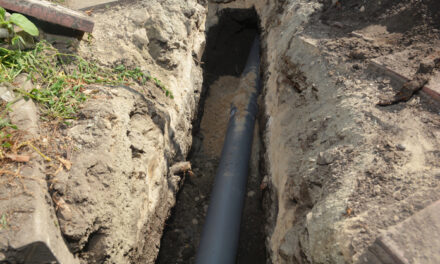Sewage and waste are not topics everyone wants to discuss. When we throw our food down the drain or flush our toilets, we don’t bother thinking where that matter ends up or what it travels through. It’s reasonable— who wants to think about garbage and grime? Well, the more knowledgeable we are about the things we are discarding, the better we can address situations that may arise in our pipes and elsewhere. Here are the dirty details about sewage and waste.
What Exactly Is Sewage?
Sewage, also known as wastewater, is the contaminated water from houses, schools, restaurants, and anywhere where anything is thrown out. It is filled with contaminants, which is anything you put down the drain. This includes: urine, paper, hair, fecal matter, toys, soaps, food scraps. They come from showers, toilets, and dishwashers and are transported to a treatment plan via a network of pipes called sewers. Upon reaching the treatment facility, the contaminants are extracted from the water to be processed into recyclable material.
Sewage Systems: What’s the Point?
Why can’t we just dump sewage and waste into a stream or on the ground outside our homes? There are a few reasons why that would be destructive.
The Smell
Wastewater is an accumulation of all the things you don’t want in your home, so it goes without saying that the immediate area surrounding the dumped waste would smell terribly.
Noxious Bacteria
Human waste is full of harmful bacteria such as coliform bacteria ( E. coli) that can cause a number of diseases. It would be an instant health hazard if they entered a body of water and infected it.
Environmental Damage
If sewage and waste were dumped in a stream, it would impede on the ecosystem and wildlife present there. Wastewater contains nitrogen and phosphates that encourage algae growth. Once those plants start blooming in great numbers, the water begins to foul. Additionally, bacteria would consume the organic material present in the sewage and consume oxygen in the process. The depleted oxygen levels would be catastrophic to aquatic life. Also, the water would become murky and make it difficult for wildlife to see. In short, it is best to keep the dirtiness of sewage and waste where they’re designed to be.
Septic Tanks and Cesspools
In neighborhoods where homes are too far apart, having a sewer system installed would be too costly. This is when homeowners maintain private treatment plants. Septic tanks are one of the more popular systems utilized due to its eco-friendliness and relative ease of use. Wastewater flows into it, the contaminants separate into layers, and the wastewater then exits to a leach field to be filtered. Cesspools are similar because they are also tanks that store waste, but they do not involve a filtration process. Wastewater enters and is stored, so the tank must be pumped and cleaned regularly. It has to be relocated to avoid contaminating the surrounding soil. You can refer to our detailed guide to all the parts of the sewer system in another blog post if you wish to learn more about the lines running beneath your home.
All in all, sewage and waste are topics of discussion that make us feel like we need to wash our hands after talking about it. Nonetheless, it is an important conversation to have. What does happen to the things that go down our drain? With that question having been answered, you can now be more aware of the sewage and draining services your home or facility may need. A&L Cesspool us here to help manage our sewage! Our team is reliable and will make sure there are no leaks or issues within the sewer line. At the end of the day, our goal is to keep everyone safe and healthy. For more services pertaining to your drain and all the junk in it, contact A&L Cesspool at (347) 201-5390.









